Mahta Mousavi
Enabling Heterogeneous Domain Adaptation in Multi-inhabitants Smart Home Activity Learning
Oct 18, 2022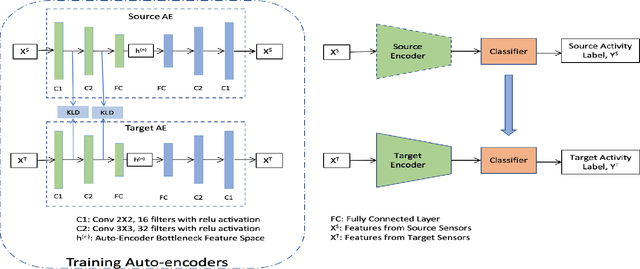
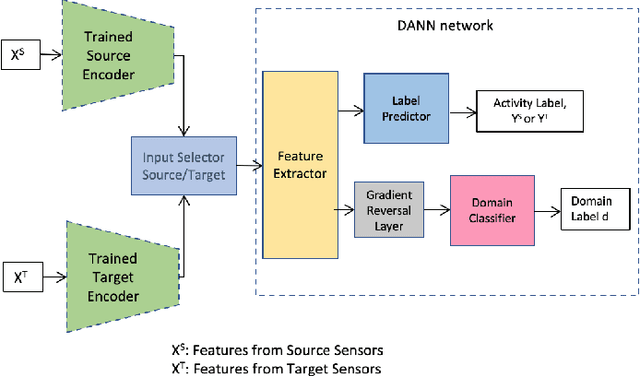
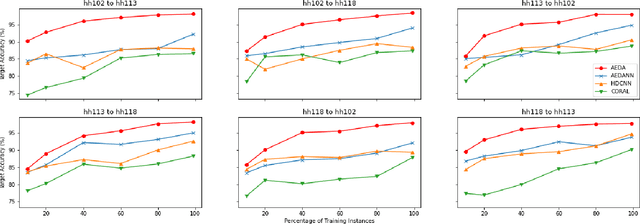
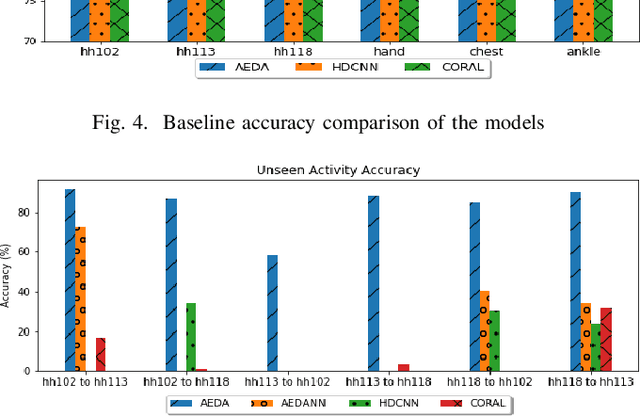
Abstract:Domain adaptation for sensor-based activity learning is of utmost importance in remote health monitoring research. However, many domain adaptation algorithms suffer with failure to operate adaptation in presence of target domain heterogeneity (which is always present in reality) and presence of multiple inhabitants dramatically hinders their generalizability producing unsatisfactory results for semi-supervised and unseen activity learning tasks. We propose \emph{AEDA}, a novel deep auto-encoder-based model to enable semi-supervised domain adaptation in the existence of target domain heterogeneity and how to incorporate it to empower heterogeneity to any homogeneous deep domain adaptation architecture for cross-domain activity learning. Experimental evaluation on 18 different heterogeneous and multi-inhabitants use-cases of 8 different domains created from 2 publicly available human activity datasets (wearable and ambient smart homes) shows that \emph{AEDA} outperforms (max. 12.8\% and 8.9\% improvements for ambient smart home and wearables) over existing domain adaptation techniques for both seen and unseen activity learning in a heterogeneous setting.
Spectrally Adaptive Common Spatial Patterns
Feb 09, 2022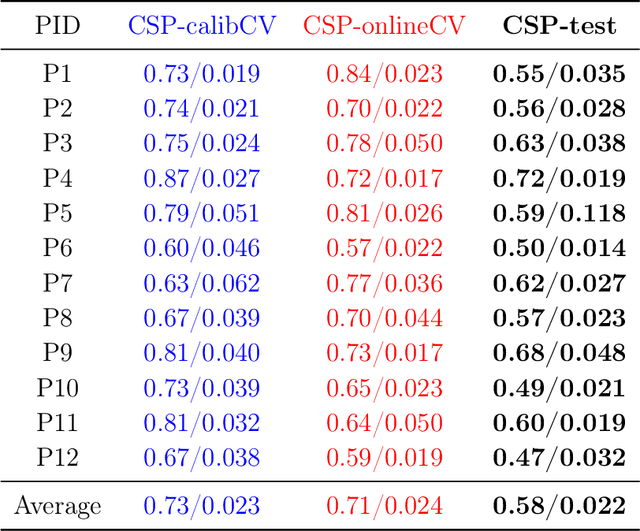
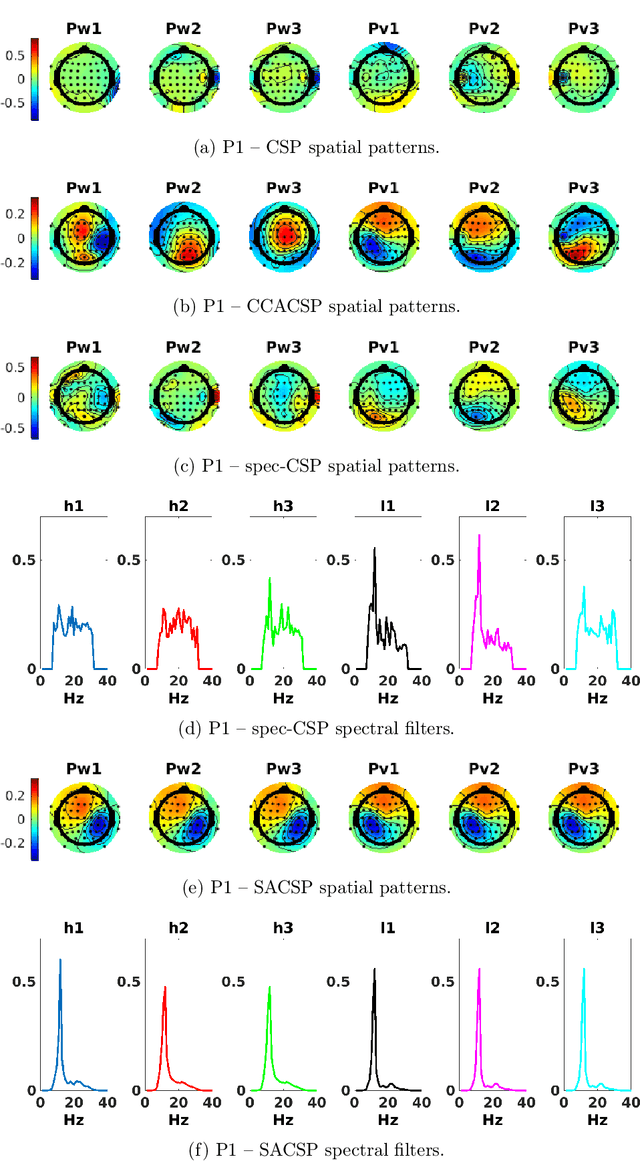
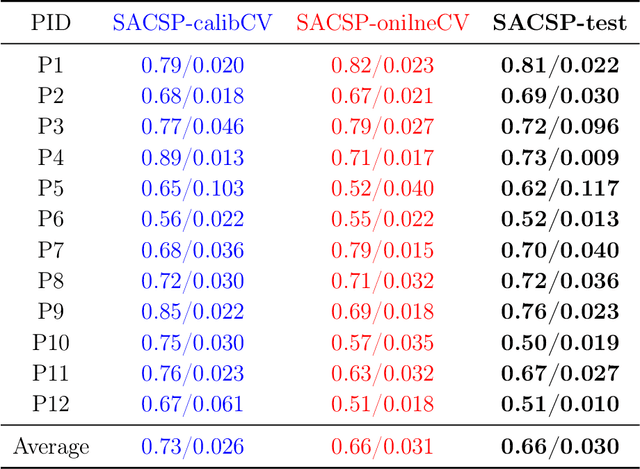
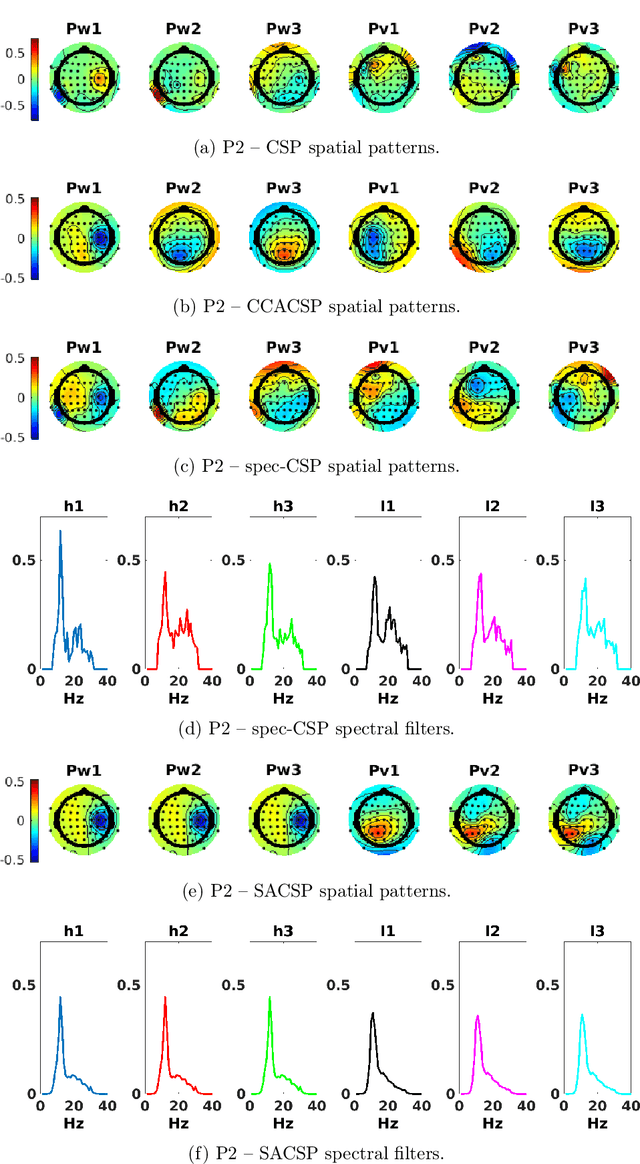
Abstract:The method of Common Spatial Patterns (CSP) is widely used for feature extraction of electroencephalography (EEG) data, such as in motor imagery brain-computer interface (BCI) systems. It is a data-driven method estimating a set of spatial filters so that the power of the filtered EEG signal is maximized for one motor imagery class and minimized for the other. This method, however, is prone to overfitting and is known to suffer from poor generalization especially with limited calibration data. Additionally, due to the high heterogeneity in brain data and the non-stationarity of brain activity, CSP is usually trained for each user separately resulting in long calibration sessions or frequent re-calibrations that are tiring for the user. In this work, we propose a novel algorithm called Spectrally Adaptive Common Spatial Patterns (SACSP) that improves CSP by learning a temporal/spectral filter for each spatial filter so that the spatial filters are concentrated on the most relevant temporal frequencies for each user. We show the efficacy of SACSP in providing better generalizability and higher classification accuracy from calibration to online control compared to existing methods. Furthermore, we show that SACSP provides neurophysiologically relevant information about the temporal frequencies of the filtered signals. Our results highlight the differences in the motor imagery signal among BCI users as well as spectral differences in the signals generated for each class, and show the importance of learning robust user-specific features in a data-driven manner.
An Empirical Study on Post-processing Methods for Word Embeddings
May 28, 2019



Abstract:Word embeddings learnt from large corpora have been adopted in various applications in natural language processing and served as the general input representations to learning systems. Recently, a series of post-processing methods have been proposed to boost the performance of word embeddings on similarity comparison and analogy retrieval tasks, and some have been adapted to compose sentence representations. The general hypothesis behind these methods is that by enforcing the embedding space to be more isotropic, the similarity between words can be better expressed. We view these methods as an approach to shrink the covariance/gram matrix, which is estimated by learning word vectors, towards a scaled identity matrix. By optimising an objective in the semi-Riemannian manifold with Centralised Kernel Alignment (CKA), we are able to search for the optimal shrinkage parameter, and provide a post-processing method to smooth the spectrum of learnt word vectors which yields improved performance on downstream tasks.
 Add to Chrome
Add to Chrome Add to Firefox
Add to Firefox Add to Edge
Add to Edge